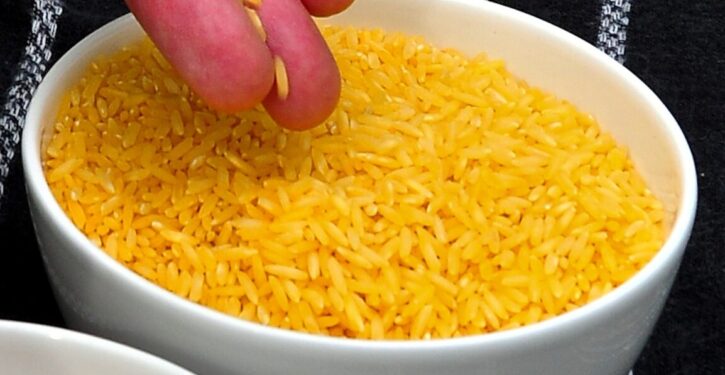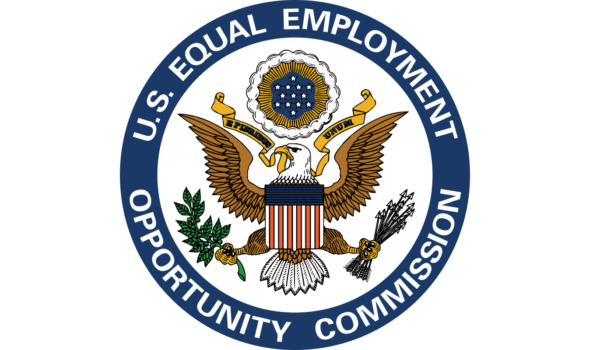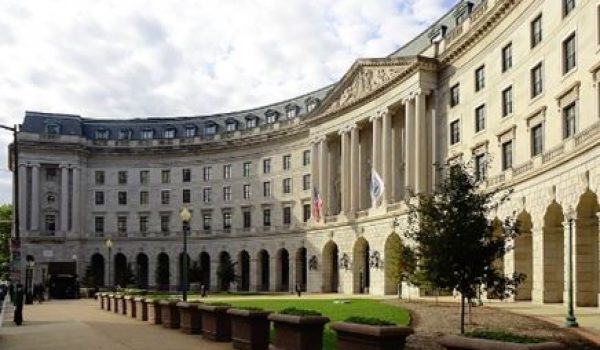
Sometimes, “the law is an ass,” as a character in a novel by Charles Dickens remarked. He said this upon being informed of a silly, archaic legal presumption that contradicted how things actually work in real life.
The law can still be an ass today. Science writer Ron Bailey of Reason Magazine describes an anti-science decision by the Philippines appeals court that could result kids going blind or dying. In “Greenpeace Crusade Will Blind and Kill Children,” he writes:
Greenpeace and other anti-biotech activist groups have logged a win in a crusade that could ultimately blind and kill thousands of children annually. How? By persuading the Court of Appeals of the Philippines to issue a scientifically ignorant and morally hideous decision to ban the planting of vitamin A–enriched golden rice. The objective result will be more children blinded and killed by vitamin A deficiency.
The World Health Organization estimates that 250,000–500,000 children who are vitamin A–deficient become blind every year, and half of them die within 12 months of losing their sight. In addition, children with immune systems weakened by vitamin A deficiency have an increased risk of illness and death from infectious diseases.
The court also banned the planting of an eggplant variety that has been biotech-enhanced to resist insect pests. The same variety approved by Bangladeshi regulators has reduced pesticide usage and improved farmers’ yields by more than 50 percent.
In their press release, Greenpeace activists crowed, “The Court of Appeals has essentially put a moratorium on these genetically modified crops.”
Golden rice was developed by a Swiss nonprofit group in 1999 by adding genes from corn and common bacteria to produce the vitamin A precursor nutrient beta carotene. It is the beta carotene that endows the nutritionally enhanced rice with its golden hue. The decision is scientifically ignorant because after evaluating numerous food health and safety studies, regulators across the globe—including those in the U.S., New Zealand, Canada, and Australia—have found that the biotech-enhanced rice is as safe to eat as any other variety of rice.
The court’s decision is morally hideous because it blocks the safe and efficient delivery of this sorely needed nutrient to vitamin A–deficient Filipino children whose diets are heavily dependent on rice. Nearly 17 percent of Filipino children between 6–59 months old are vitamin A–deficient.
The court’s ruling reverses the Philippine Department of Agriculture’s decision to allow farmers to plant golden rice back in 2021.
The ruling ignores the consensus of agricultural and scientific experts that the golden rice is safe and useful. Eight years ago, 100 Nobel Prize winners wrote an open letter to Greenpeace demanding that the anti-technology activist group “cease and desist in its campaign against Golden Rice specifically, and crops and foods improved through biotechnology in general.”
Those Nobel Prize winners noted that “scientific and regulatory agencies around the world have repeatedly and consistently found crops and foods improved through biotechnology to be as safe as, if not safer than those derived from any other method of production. There has never been a single confirmed case of a negative health outcome for humans or animals from their consumption. Their environmental impacts have been shown repeatedly to be less damaging to the environment, and a boon to global biodiversity.”
The Nobel Prize winners added,
WE CALL UPON GOVERNMENTS OF THE WORLD to reject Greenpeace’s campaign against Golden Rice specifically, and crops and foods improved through biotechnology in general; and to do everything in their power to oppose Greenpeace’s actions and accelerate the access of farmers to all the tools of modern biology, especially seeds improved through biotechnology. Opposition based on emotion and dogma contradicted by data must be stopped.
How many poor people in the world must die before we consider this a “crime against humanity“?
In other countries, genetically-modified crops have faced obstacles such as lawsuits by green groups against them, reducing agricultural production. Kenya’s government wanted its farmers to grow pest-resistant, drought-tolerant corn, as pests devoured much of its corn crop, and Kenya faced its worst drought in over 40 years. For five years, drought had decimated Kenya’s corn crop. For eight years, fall armyworm moths had ravaged Kenya’s corn crop, destroying a third of Kenya’s annual production.
So Kenya’s cabinet imported 11 tons of corn seeds genetically modified to be pest-resistant and drought-resistant last year. But four lawsuits were brought over the seeds by an environmentalist group and others, resulting in legal blocks against their distribution. Kenya’s GMO regulator was barred from releasing the seeds, pending a future court hearing. So farmers couldn’t plant the seeds, keeping them from producing enough food to feed Kenya’s people. Late last year, Kenya’s Supreme Court threw out the legal challenge, but many farmers are spooked by false claims about the crops.
Genetically-modified crops help the environment, by reducing the consumption of land, water, pesticides, and fertilizer, and increasing crop yields. As Ars Technica notes,
Improving crop yields helps feed more people, but it’s also good for the environment. The more food that can be grown on each square kilometer of land, the less land that needs to be converted to agriculture. As you can see in this chart from Our World in Data, South Asia produces a lot more cereal crops today than it did in 1980—and all of this growth came from increased crop yields. It’s not using any more land to grow those crops than it was 40 years ago. In sub-Saharan Africa it’s the opposite story. The area is also producing more cereals than in 1980, but almost all of this growth has come from converting more land into farmland. Low crop yields mean that feeding more people comes at the expense of natural habitats.
GM crops might be one way to increase yields. In South Africa, GM maize fields produce 11.1 percent more per hectare on average than non-GM fields—extra maize that would have taken more than 2,000 square kilometers of extra farmland to produce using conventional seeds.
Kenya already plants genetically-modified cotton, which has improved its environment and its economy. As Kenyan farmer Magondo notes, his cotton crop uses “much less pesticide,” and results in a bigger harvest, than was the case before he began planting genetically-modified cotton in 2019. Using less pesticide is great for the environment, since pesticides can contaminate soil or water, or kill birds or beneficial insects.
Yet some green activists oppose the genetic engineering that creates such environmentally-friendly crops. Green activists opposed genetically-modified rice that uses less fertilizer than traditional rice, while yielding more food. Similarly, they opposed genetically-modified “golden rice,” notes Wesley Smith of the Discovery Institute. Golden rice “has the great potential to prevent blindness in children who live in developing countries caused by Vitamin A deficiency.” Scientists engineered these rice plants to produce beta-carotene. But distribution of them “was thwarted for many years, even though growth and distribution will be via a non-profit.”
In 2003, green activists in the Philippines destroyed a field trial of Golden Rice being conducted by researchers. As food safety expert Gregory Conko noted, “Golden Rice is a humanitarian project—the grains engineered to produce beta carotene to provide a needed Vitamin supplement for poor rice-growing farmers in less developed countries. Activists even tried to convince Filipino farmers that walking through a field of genetically engineered corn could turn farmers gay.”
They did this “despite the considered opinion of dozens of scientific bodies from all around the world” that “genetically engineered crops now on the market are safe for consumers and the environment,” a conclusion reached by “the U.S. National Academies of Science, American Association for the Advancement of Science, the U.K.’s Royal Society, and the French Academy of Science.”
Left-wing activists have vandalized other projects to genetically improve crops. For example, Smith notes, “experimental wheat field intended to develop a plant that is resistant to fungal infection was trampled asunder by activists who apparently prefer human starvation to a benign modification of wheat so that it will be more resilient.”
Bureaucratic agencies delay for years the distribution of genetically-enhanced crops and foods. It took 20 years for genetically-enhanced salmon to be approved by the FDA.
Left-wing opposition to agricultural advances has not been not limited to genetic engineering. Some left-wing Luddites also denounced crossbreeding and selective breeding that improved crop yields, such as wheat that put most of its energy into edible kernels rather than long, inedible stems.
The agronomist Norman Borlaug, who pioneered the Green Revolution, saved perhaps a billion lives in the Third World by developing high-yield, disease-resistant crops through biotechnology. For this, he received the Nobel Peace Prize, the Presidential Medal of Freedom, and the Congressional Medal of Honor. Yet he was smeared in the left-wing magazine The Nation, which had an irrational phobia of biotechnology, as being “the biggest killer of all.”
Green activists also want to ban nitrogen fertilizer, which is essential to feeding the world’s people. When nitrogen fertilizer is banned, farms can produce only a fraction of what they once produced. When Sri Lanka followed green activists’ advice to get rid of nitrogen fertilizers, its economy and farm sector collapsed last year, leaving millions of people hungry and broke, and fields lying empty.



